Celts In Poland: Iron Smelting Furnaces Used By Celts 2,400 Years Ago – Unearthed
Jan Bartek - AncientPages.com - Science in Poland reports that the remains of twelve iron smelting furnaces used by the Celts 2,400 years ago have been discovered in archaeological excavations in the village of Warkocz near Strzelin in southwest Poland.
 Bird's eye view of an archaeological excavation, in which a Celtic metallurgical workshop is visible. Credit: Stanisław Rzeźnik
Bird's eye view of an archaeological excavation, in which a Celtic metallurgical workshop is visible. Credit: Stanisław Rzeźnik
"The iron smelting furnaces that we discovered in Warkocz most probably come from this earliest phase of their stay in the lands of modern-day Poland,” said Dr. Przemysław Dulęba from the Institute of Archaeology of the University of Wrocław, who led the works.
The Celts spread across almost all of Europe, north of the Alps, in the mid 1st millennium BC. They reached the areas of modern-day Silesia and Małopolska at the turn of the 4th century BC.
After their arrival, they introduced numerous innovations in Europe. They were the first to shoe horses,
they popularised the saddle and created the first chain mail. However, "the time of their arrival is a still poorly researched and mysterious period in the prehistory of southern and central Poland," according to Dr. Duleba.
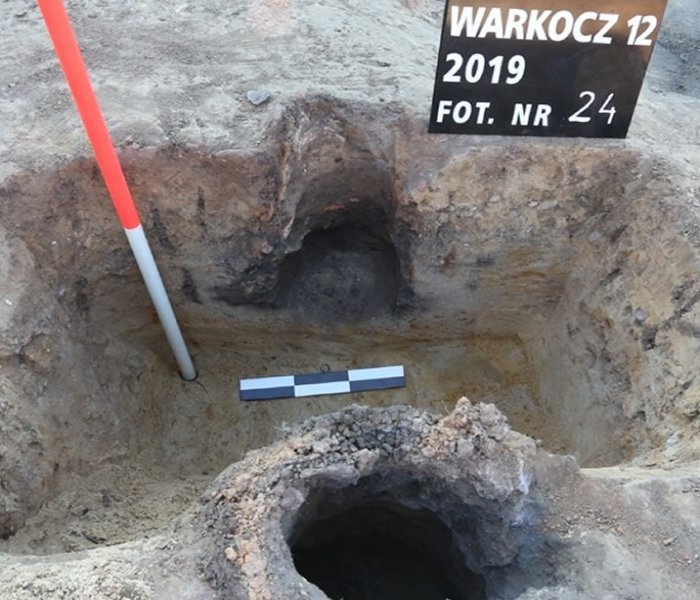 Warkocz near Strzelin (southwestern Poland) - Celtic industrial center – metal and ceramic production, excavations in 2019. Image credit: Institute of Archaeology, University of Wroclaw
Warkocz near Strzelin (southwestern Poland) - Celtic industrial center – metal and ceramic production, excavations in 2019. Image credit: Institute of Archaeology, University of Wroclaw
The furnaces were dug deep into the ground, and their interior lined with pugging (an insulating layer containing clay). Only a very small part protruded from the surface of the earth. Inside, single pieces of melted iron and slag were found.
Very similar clusters of furnaces, in terms of both form and spatial arrangement, are known from Czechia.
See also:
Puzzle Of The Bull Rock Cave – Ancient Mass Grave Remains Unexplained
Anartes: Forgotten Celtic Tribe And The Hercynian Forest With Strange Animals
Gundestrup Cauldron: Great Gilded Silver Vessel Decorated With Scenes Derived From Celtic Mythology
Objects dating back to the 4th century BC found alongside the furnaces, including fragments of ceramic vessels, metal ornaments, and clothing items as well as garment clasps, convinced the archaeologists that they were used by the Celts.
”Interestingly, bloomeries (metallurgical furnaces - PAP) from the Roman period, i.e. a few hundred years later, were single-use installations,” said Dr. Dulęba, adding that this is proof of the Celts` great proficiency in the field of metallurgy.
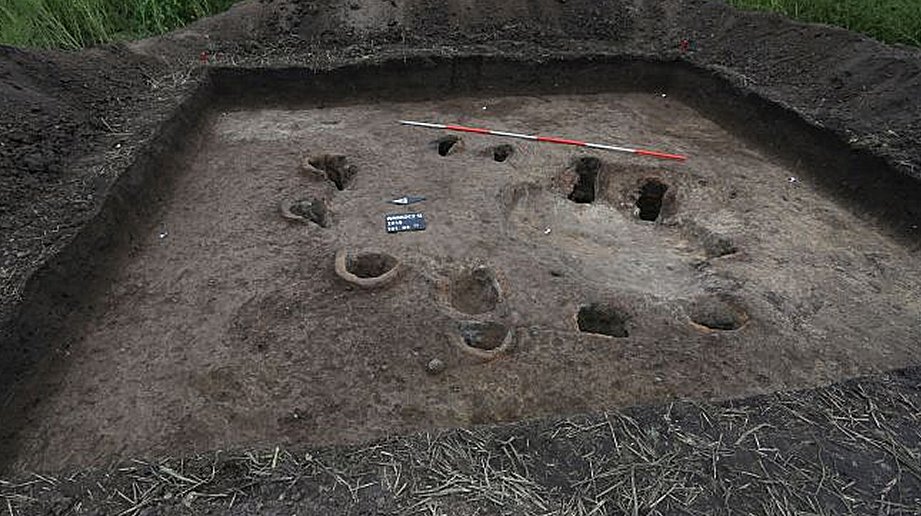 Archaeological excavation with relics of a metallurgical workshop discovered in Warkocz in Lower Silesia. Credit: Stanisław Rzeźnik
Archaeological excavation with relics of a metallurgical workshop discovered in Warkocz in Lower Silesia. Credit: Stanisław Rzeźnik
For now, researchers have opened only one small archaeological excavation but Dr. Dulęba says he believes there could be more furnaces in the area.
The archaeologists chose the excavation site after using a magnetic method that registers traces of old buildings and structures that were once strongly exposed to high temperatures.
See Also: More Archaeology News
”If expert research in the form of analyses and radiocarbon dating of burnt wood residues from furnaces confirms our assumption, we will be able to state with certainty that this is the first well documented Celt metallurgical workshop in modern-day Poland,” Dr. Dulęba said.
The oldest artifacts found in the settlement come from the second half of the 3rd century BC.
Written by Jan Bartek - AncientPages.com Staff Writer
More From Ancient Pages
-
 Yungang Grottoes: Marvellous Example Of Ancient Buddhist Rock-Cut Architecture
Featured Stories | Sep 15, 2015
Yungang Grottoes: Marvellous Example Of Ancient Buddhist Rock-Cut Architecture
Featured Stories | Sep 15, 2015 -
 Secret Ancient Lunar Calendar May Be Hidden At A Hittite Sanctuary
Archaeology | Jul 3, 2019
Secret Ancient Lunar Calendar May Be Hidden At A Hittite Sanctuary
Archaeology | Jul 3, 2019 -
 The Controversial History Of Moses – Who Was He Really?
Biblical Mysteries | Sep 13, 2015
The Controversial History Of Moses – Who Was He Really?
Biblical Mysteries | Sep 13, 2015 -
 Was Ancient Egyptian Science Inherited From A Lost Atlantean Civilization?
Ancient Mysteries | Sep 4, 2017
Was Ancient Egyptian Science Inherited From A Lost Atlantean Civilization?
Ancient Mysteries | Sep 4, 2017 -
 Chaneques: Mischievous Legendary Tricksters In Mexican Folklore
Featured Stories | Apr 14, 2020
Chaneques: Mischievous Legendary Tricksters In Mexican Folklore
Featured Stories | Apr 14, 2020 -
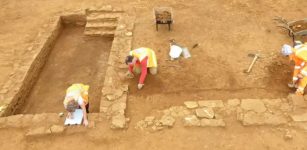 Unusual 4,000-Year-Old Site And Other Curiosities Discovered In Overstone, Northamptonshire, UK
Archaeology | Jan 10, 2023
Unusual 4,000-Year-Old Site And Other Curiosities Discovered In Overstone, Northamptonshire, UK
Archaeology | Jan 10, 2023 -
 On This Day In History: ‘Earl of Northumberland’ Thomas Percy Executed Because He Was Catholic – On August 22, 1572
News | Aug 22, 2016
On This Day In History: ‘Earl of Northumberland’ Thomas Percy Executed Because He Was Catholic – On August 22, 1572
News | Aug 22, 2016 -
 Recent Unexpected Findings Of Early Sweet Potato Cultivation In Polynesia
Archaeology | Oct 2, 2024
Recent Unexpected Findings Of Early Sweet Potato Cultivation In Polynesia
Archaeology | Oct 2, 2024 -
 First Known Depiction Of The Biblical Heroines Deborah And Jael Unearthed On 1,600-Year-Old Mosaics
Archaeology | Jul 6, 2022
First Known Depiction Of The Biblical Heroines Deborah And Jael Unearthed On 1,600-Year-Old Mosaics
Archaeology | Jul 6, 2022 -
 ‘Sesselfelsgrotte Cave’ – Innovative Neanderthals Adjusted To Climate Change By Creating More Complex Tools
Artifacts | Aug 31, 2020
‘Sesselfelsgrotte Cave’ – Innovative Neanderthals Adjusted To Climate Change By Creating More Complex Tools
Artifacts | Aug 31, 2020 -
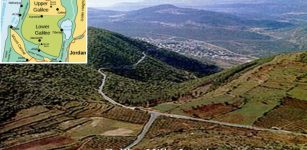 Mysterious 4,000-Year-Old Table-Like And Unique Dolmen Discovered In Galilee Hills, Israel
Archaeology | Mar 6, 2017
Mysterious 4,000-Year-Old Table-Like And Unique Dolmen Discovered In Galilee Hills, Israel
Archaeology | Mar 6, 2017 -
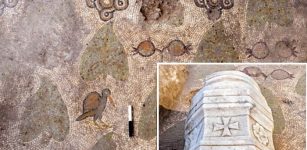 Extraordinary Ancient Mosaics, Crucifixes, And Long-Lost Church Discovered In The Holy Land
Archaeology | Dec 22, 2017
Extraordinary Ancient Mosaics, Crucifixes, And Long-Lost Church Discovered In The Holy Land
Archaeology | Dec 22, 2017 -
 Modern Humans Have Their Homeland In Botswana – New Study
Archaeology | Oct 29, 2019
Modern Humans Have Their Homeland In Botswana – New Study
Archaeology | Oct 29, 2019 -
 Yokai Kitsune: Charming And Cunning Liar With Double Nature In Japanese Folklore
Featured Stories | May 22, 2020
Yokai Kitsune: Charming And Cunning Liar With Double Nature In Japanese Folklore
Featured Stories | May 22, 2020 -
 Why Did God Zeus Give King Sisyphus An Eternal Punishment?
Featured Stories | Sep 2, 2019
Why Did God Zeus Give King Sisyphus An Eternal Punishment?
Featured Stories | Sep 2, 2019 -
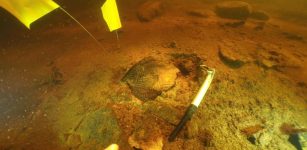 Neolithic Culinary Traditions Uncovered
Archaeology | Sep 7, 2022
Neolithic Culinary Traditions Uncovered
Archaeology | Sep 7, 2022 -
 Emerald Production In Eastern Desert Of Roman Egypt – New Evidence
Archaeology | Apr 16, 2021
Emerald Production In Eastern Desert Of Roman Egypt – New Evidence
Archaeology | Apr 16, 2021 -
 New Pyramid Discovered In The Sacred City Of Caral – Home To South America’s Oldest Civilization
Archaeology | Feb 10, 2025
New Pyramid Discovered In The Sacred City Of Caral – Home To South America’s Oldest Civilization
Archaeology | Feb 10, 2025 -
 Mystery Of The Ancient Skull Found In Ephesus Solved – It Did Not Belong To Arsinoë IV, Cleopatra’s Sister
Archaeology | Jan 10, 2025
Mystery Of The Ancient Skull Found In Ephesus Solved – It Did Not Belong To Arsinoë IV, Cleopatra’s Sister
Archaeology | Jan 10, 2025 -
 Egyptian Temple Culture In Ptolemaic-Era Survived Changes And Became Even Stronger – Researcher Says
Archaeology | Mar 1, 2017
Egyptian Temple Culture In Ptolemaic-Era Survived Changes And Became Even Stronger – Researcher Says
Archaeology | Mar 1, 2017
